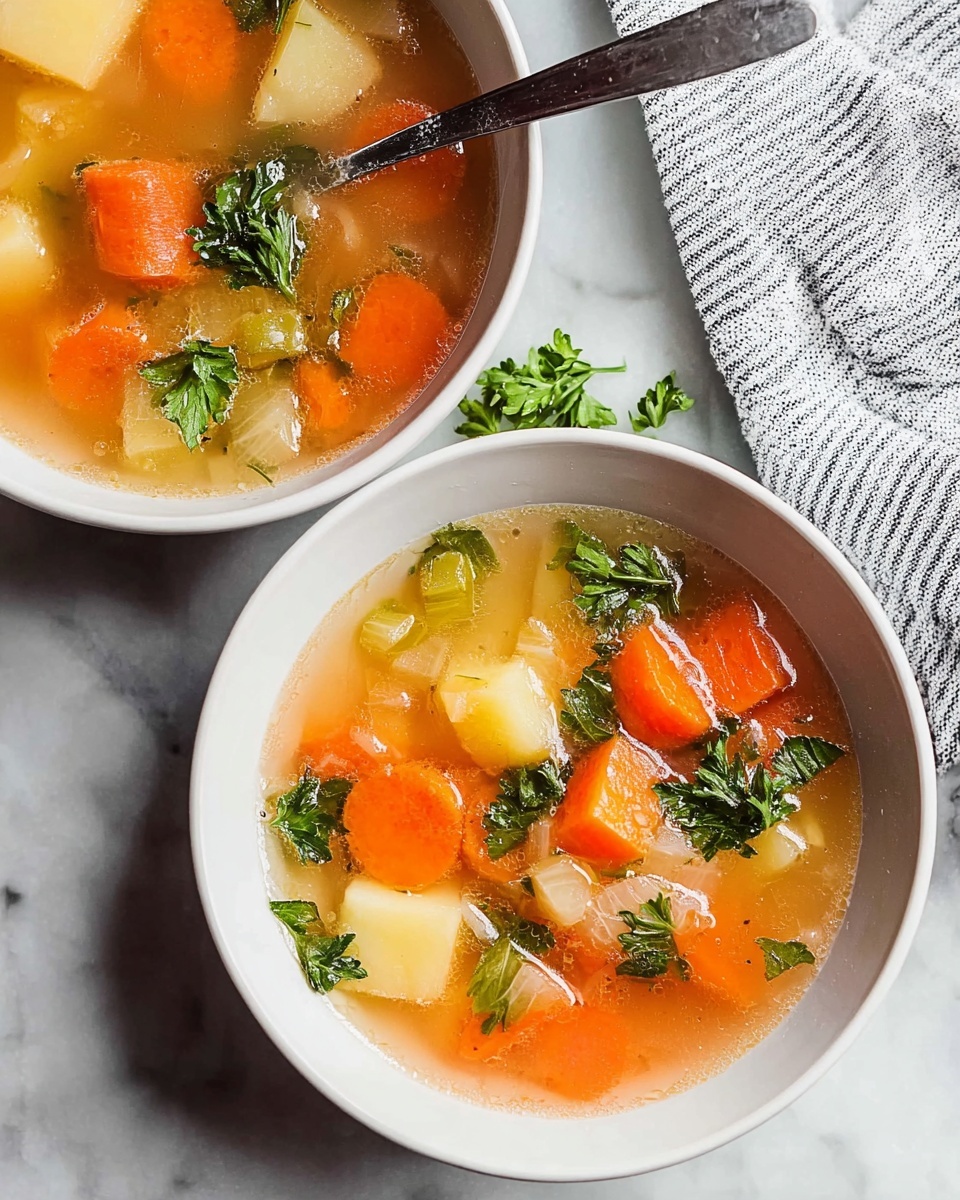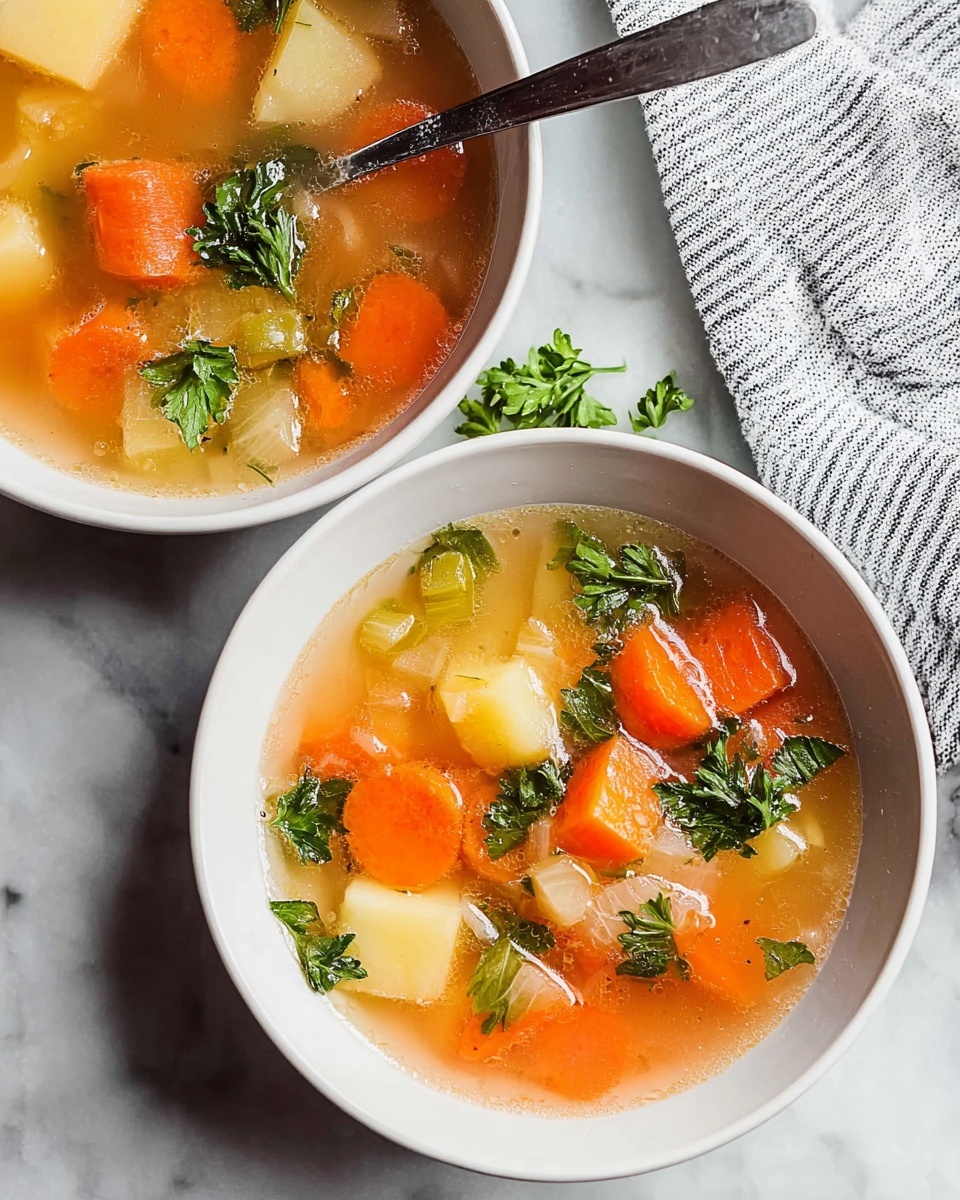If you’re seeking a soul-soothing, vibrant, and health-boosting meal, look no further than this Cleansing Winter Vegetable Miso Soup: An Incredible Ultimate Recipe. This soup is a joyous celebration of winter’s freshest veggies, enriched with fragrant ginger and garlic, silky miso, and a hint of rice vinegar to brighten every spoonful. Perfectly balanced between comfort and nourishment, it’s just the kind of dish to warm you from the inside out on chilly days while supporting your body’s natural detox routines. Every bowl is a testament to how simple ingredients can create something truly magical and deeply satisfying.

Ingredients You’ll Need
Gathering the right ingredients for this soup is key to unlocking its soul-warming flavors and vibrant textures. Each component plays a vital role, from the rich umami of miso to the sweetness of winter vegetables and the gentle heat of ginger and garlic.
- 1 tablespoon sesame oil: Adds a subtle, nutty aroma that forms the soup’s flavorful foundation.
- 1 small yellow onion, diced: Brings a natural sweetness and depth when softened in the pan.
- 2 garlic cloves, minced: Infuses a warm, pungent note essential for layering flavors.
- 1 tablespoon freshly grated ginger: Offers a refreshing zing and helps to invigorate the body.
- 2 carrots, peeled and sliced: Provide a tender sweetness and beautiful color.
- 1 cup chopped napa cabbage: Adds a delicate crunch and mild bitterness that balances richness.
- 1 cup chopped kale or baby spinach: Offers vibrant green color and earthy nutrients, whisked in last to keep it tender.
- 1 small sweet potato, peeled and diced: Contributes creamy texture and natural sweetness.
- 5 cups low-sodium vegetable broth: The nourishing liquid base that brings everything together.
- 3 tablespoons white or yellow miso paste: The heart of the soup with its deep umami complexity.
- 1 tablespoon soy sauce or tamari: Adds extra savory depth and balances sweetness.
- 1/2 cup cubed tofu (optional): Provides protein and a silky texture, perfect for a heartier version.
- 2 green onions, sliced: Fresh garnish that introduces a crisp pop of flavor.
- 1 tablespoon rice vinegar (optional): A splash of brightness that lifts the soup’s overall profile.
- Sesame seeds and chili flakes (optional): For garnish, offering subtle crunch and a gentle kick to suit your mood.
How to Make Cleansing Winter Vegetable Miso Soup: An Incredible Ultimate Recipe
Step 1: Sauté Aromatics to Build Flavor
Start by warming the sesame oil in a large pot over medium heat. Toss in your diced yellow onion and gently sauté for 2 to 3 minutes until it takes on a soft translucence. This step unlocks the onion’s natural sweetness, setting an essential flavor foundation. Next, add minced garlic and freshly grated ginger, stirring continuously for about a minute. The aroma released here is pure magic—it awakens your senses and perfectly preps the base for the vegetables to come.
Step 2: Add Winter Vegetables and Broth
Now it’s time to introduce the winter vegetables—carrots, sweet potato, and napa cabbage. Give them a good stir to coat all the ingredients with those fragrant aromatics. Pour in the low-sodium vegetable broth and bring everything up to a gentle simmer. Cover the pot and let the flavors meld together for 10 to 12 minutes, or until the vegetables are tender but still hold their shape, showcasing a beautiful balance between softness and bite.
Step 3: Incorporate Miso and Final Ingredients
Turn off the heat and allow the soup to cool just enough to protect the delicate miso’s probiotic benefits. In a small bowl, whisk the miso paste with a few ladlefuls of hot broth until smooth, then stir this flavorful elixir back into the pot. Add soy sauce and gently fold in cubed tofu if you’re using it. At this point, stir in your kale or baby spinach and let the gentle residual heat wilt the greens, adding a burst of vibrant color and nutrition. For an optional pop of brightness, stir in a splash of rice vinegar.
How to Serve Cleansing Winter Vegetable Miso Soup: An Incredible Ultimate Recipe

Garnishes
The finishing touches make all the difference. Sprinkle sliced green onions on top to add a fresh, crisp bite that contrasts beautifully with the warm broth. Toss on a scattering of toasted sesame seeds for a delightful crunch and subtle nuttiness. If you’re craving a bit of heat, chili flakes bring just the right kick to warm your palate without overpowering the delicate flavors.
Side Dishes
This soup is wonderfully versatile and pairs beautifully with light, complementary sides like steamed jasmine rice or a crunchy seaweed salad. For a heartier meal, some freshly baked crusty bread or a side of pickled vegetables adds a satisfying texture dimension and enhances the overall experience.
Creative Ways to Present
Serving this soup in rustic ceramic bowls not only keeps it warm longer but also enhances its comforting vibe. For a special touch, float a small edible flower or add a swirl of coconut cream for an elegant presentation. If you’re hosting, consider individual portions with a small side of kimchi on the tray—it’s a flavor-packed way to introduce guests to Japanese-inspired winter warmth.
Make Ahead and Storage
Storing Leftovers
Once cooled, store the soup in an airtight container in the refrigerator for up to 3 days. Because miso’s live culture can degrade if reheated improperly, it’s best to add any extra miso paste fresh when reheating leftovers to keep that vibrant, probiotic-rich flavor alive.
Freezing
This soup freezes well, but the texture of some vegetables and tofu may soften considerably. If you plan to freeze, omit the greens and tofu and add them fresh when reheating for the best consistency. Store in freezer-safe containers for up to 2 months for easy, nourishing meals at your fingertips.
Reheating
Reheat gently over low heat, stirring occasionally until warmed through. Avoid boiling, especially after miso has been added, to preserve its healthful benefits and complex flavor. Add fresh miso paste or extra leafy greens if needed to revive the soup’s freshness.
FAQs
Can I use other vegetables in this Cleansing Winter Vegetable Miso Soup: An Incredible Ultimate Recipe?
Absolutely! This recipe is wonderfully flexible. Feel free to swap or add winter veggies like parsnips, daikon, mushrooms, or even celery root. The great thing is the broth and miso accommodate a wide range of flavors beautifully.
Is this soup vegan and gluten-free?
Yes, it is naturally vegan. For gluten-free, just be sure to use tamari instead of soy sauce to avoid any gluten. Miso paste brands vary, so double-check labels to ensure they suit your dietary needs.
Can I make this soup without tofu?
Definitely! Tofu is optional here and adds protein and creaminess, but leaving it out won’t compromise the soup’s comforting, cleansing qualities. You can add beans or sprouts as an alternative, if you like.
Why shouldn’t I boil the soup after adding miso?
Miso contains live probiotics that can be destroyed by boiling temperatures. Gently warming or stirring it in off the heat helps retain those beneficial properties and keeps the soup’s flavors intact and bright.
What makes this Cleansing Winter Vegetable Miso Soup: An Incredible Ultimate Recipe cleansing?
The combination of nutrient-dense winter vegetables, fresh ginger and garlic, and probiotic-rich miso helps support your digestion and detoxification naturally, making this soup a wonderful choice for anyone wanting to feel clean and energized during colder months.
Final Thoughts
Sharing this Cleansing Winter Vegetable Miso Soup: An Incredible Ultimate Recipe with you is like passing along a warm, comforting hug in a bowl. It’s simple enough for a weeknight meal but special enough to make anytime you need a nourishing pick-me-up. I invite you to try it yourself, customize it to your taste, and let its wholesome flavors brighten even the coldest days. Once you do, I’m certain it will become one of your own ultimate winter cravings.
Print
Cleansing Winter Vegetable Miso Soup: An Incredible Ultimate Recipe
- Prep Time: 10 minutes
- Cook Time: 20 minutes
- Total Time: 30 minutes
- Yield: 4 servings
- Category: Soup
- Method: Stovetop
- Cuisine: Japanese-Inspired
- Diet: Vegan
Description
This Cleansing Winter Vegetable Miso Soup is a comforting and nourishing Japanese-inspired recipe perfect for chilly days. Packed with wholesome winter vegetables, rich miso paste, and optional tofu, this vegan and gluten-free soup offers a flavorful and detoxifying meal that supports digestive health and overall wellness.
Ingredients
Soup Base
- 1 tablespoon sesame oil
- 1 small yellow onion, diced
- 2 garlic cloves, minced
- 1 tablespoon freshly grated ginger
Vegetables
- 2 carrots, peeled and sliced
- 1 small sweet potato, peeled and diced
- 1 cup chopped napa cabbage
- 1 cup chopped kale or baby spinach
Broth and Flavorings
- 5 cups low-sodium vegetable broth
- 3 tablespoons white or yellow miso paste
- 1 tablespoon soy sauce or tamari
- 1 tablespoon rice vinegar (optional)
Additional
- 1/2 cup cubed tofu (optional)
- 2 green onions, sliced
- Sesame seeds for garnish (optional)
- Chili flakes for garnish (optional)
Instructions
- Prepare Aromatics: In a large pot, heat the sesame oil over medium heat. Add the diced onion and sauté for 2–3 minutes until soft. Stir in the minced garlic and freshly grated ginger and cook for another minute until fragrant to build the soup’s aromatic base.
- Add Vegetables: Incorporate the sliced carrots, diced sweet potato, and chopped napa cabbage into the pot. Stir well to evenly coat the vegetables with the sautéed aromatics and sesame oil.
- Simmer the Soup: Pour in the low-sodium vegetable broth and bring the mixture to a gentle simmer. Cover the pot and cook for 10–12 minutes or until the vegetables are tender and cooked through.
- Add Miso Paste: Turn off the heat and allow the soup to cool slightly. In a small bowl, whisk the miso paste with a few tablespoons of the hot broth until smooth. Stir this mixture back into the pot carefully, making sure not to boil the soup after adding miso to preserve its probiotics.
- Finish Flavors and Greens: Stir in soy sauce (or tamari) and cubed tofu if using. Add the chopped kale or baby spinach and gently stir until wilted. Optionally, add a splash of rice vinegar for brightness.
- Serve: Ladle the soup into bowls and garnish with sliced green onions, sesame seeds, and chili flakes if desired. Serve hot and enjoy the comforting, nourishing flavors.
Notes
- Avoid boiling the soup after adding miso paste to preserve its beneficial probiotics.
- For enhanced detoxification, add a sheet of kombu (dried kelp) during cooking and remove it before serving.
- This recipe is flexible; feel free to swap in other winter vegetables like parsnips, daikon radish, or mushrooms.
- Use tamari instead of soy sauce for a gluten-free version.








